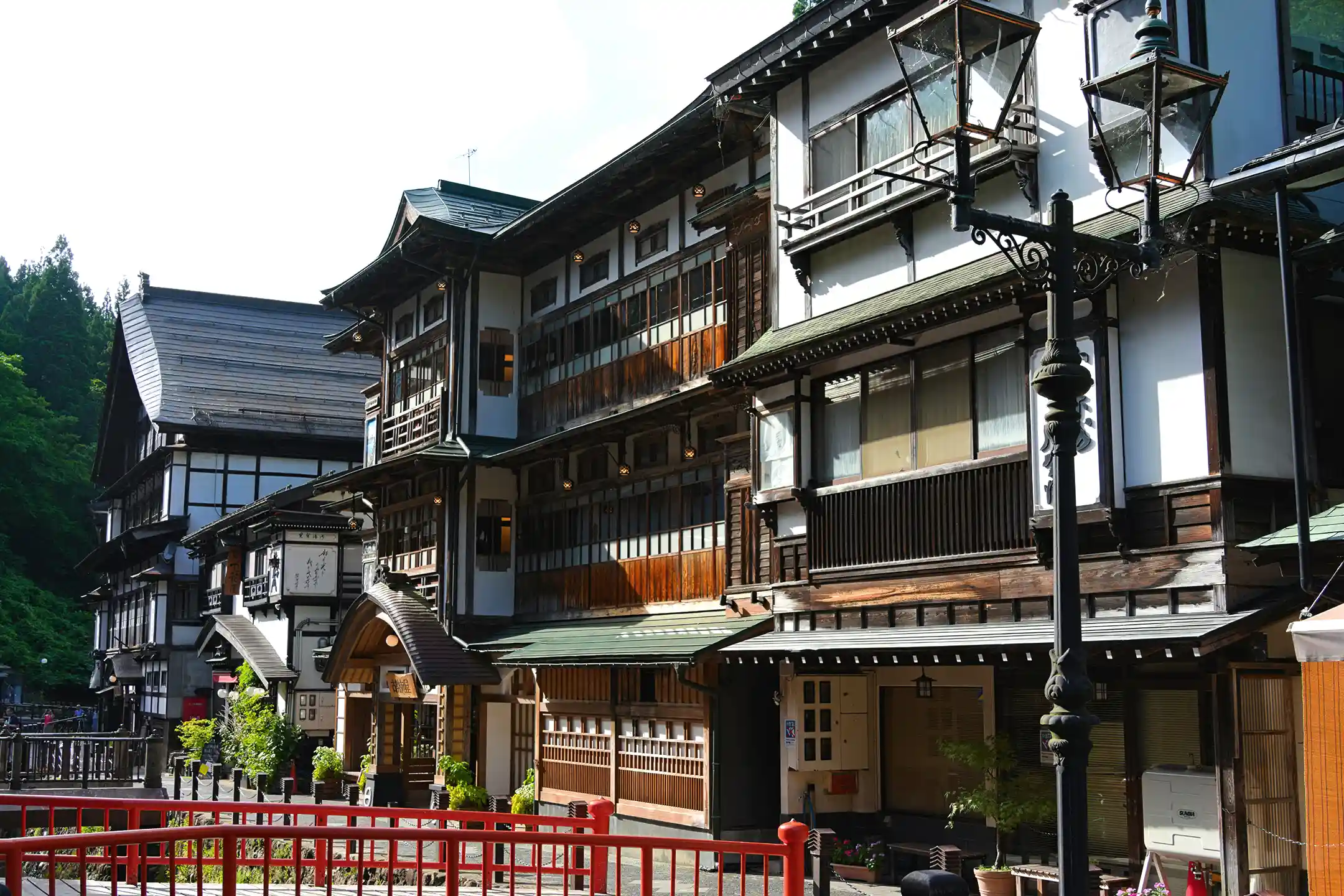Hakone ranks among the world’s leading destinations for high‑value wellness travel. If you’re asking “is hakone worth visiting”, this guide answers with evidence and on‑the‑ground insight: a healing environment shaped by volcanic hot springs and forests, and a stay experience where culture and sustainability work in harmony. The short answer—yes, especially if you value sustainable, restorative luxury close to Tokyo.
With effortless access from the city, millennia‑old traditions of balneotherapy and cultural rites, and forward‑looking sustainability efforts, Hakone offers an investment‑worthy journey that renews both body and mind.
Backed by academic research and enlivened with first‑hand stories that resonate, this guide delivers Hakone’s allure with the lightness of a travel magazine—purpose‑built for discerning travelers who love high‑end, responsible journeys.
Is Hakone Worth Visiting? Five Core Elements
Hakone offers five core delights that satisfy both mind and body: the scientifically substantiated healing effects of volcanic hot springs; deeply mindful vistas of Mount Fuji and Lake Ashi; seamless access that helps you step away from urban noise; spiritual ease offered by historical cultural heritage; and internationally recognized, trailblazing sustainable‑tourism initiatives. Below, you’ll find a detailed look at each element.
Volcanic Hot Springs and Evidence‑Backed Healing Benefits
Hakone’s hot springs are volcanically derived and mineral‑rich, long cherished as therapeutic baths. Modern science now corroborates those benefits. For example, Hakone’s simple springs are gentle and considered supportive for autonomic imbalance, insomnia, and low mood (*1). Sulfur springs, noted for strong antibacterial action and enhanced circulation, are understood to aid wound healing and dermatitis (*1).
Research shows that bathing in hot springs raises core body temperature by about 1.5 °C, improving circulation in ways that support recovery from fatigue and relieve pain (*2). A 15‑minute soak in warm water (38–40 °C) favors the parasympathetic nervous system, producing a calming effect (*3).
Alternating hot‑ and cold‑water immersion (“contrast bathing”) is also gaining attention. Warm water stimulates the parasympathetic nervous system, while cold water activates the sympathetic; alternating between them helps you switch states smoothly and restore balance in your autonomic nervous system (*4). In short, Hakone’s thermal therapies deliver mind‑and‑body relief with robust scientific backing.
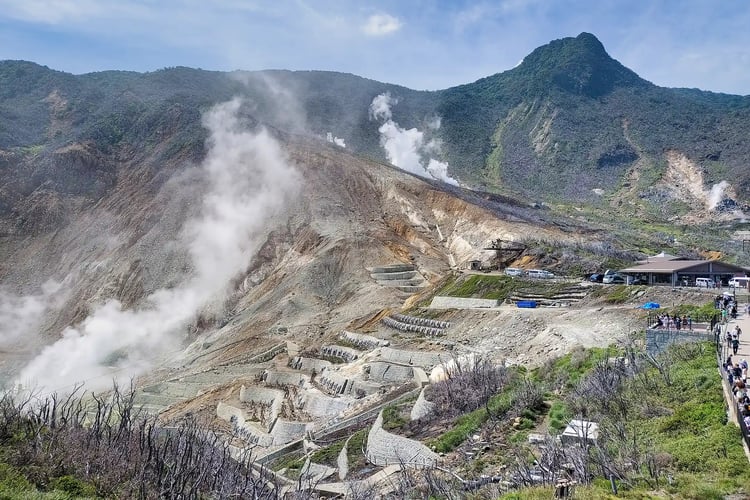
Mindfulness Inspired by Panoramas of Mount Fuji and Lake Ashi
The iconic views of Mount Fuji and Lake Ashi quiet the mind and invite a mindful state. At dawn, a silky sea of clouds may drift over Lake Ashi—a “limited‑edition surprise for early risers” thanks to its rare, captivating beauty (*5).
Stand by the clear morning shore and watch sunrise mist frame Fuji’s silhouette. Daily distractions fall away as attention settles into the present. In autumn, the pampas grass fields of Sengokuhara sway like waves of gold; together with Mount Kintoki and nearby wetlands, the landscape becomes a living artwork (*6).
A slow hike through shimmering pampas fields sharpens the senses—walking meditation that reconnects you with nature. Immersion in grand natural scenery is widely associated with stress reduction and a shift toward a relaxed, parasympathetic state; in Hakone, the vistas themselves help reset the traveler’s mind.
Seamless Access That Helps You Switch Gears
Hakone is special because it pairs effortless access with a potent sense of escape. From Tokyo/Shinjuku to Hakone‑Yumoto, the Odakyu Limited Express Romancecar takes about 85–90 minutes—close enough to fold into a Tokyo itinerary without strain. Reserved seats and panoramic windows set a relaxing mood from the moment you depart.
For sustainability‑minded travel, private transfers by electric vehicle help lower environmental impact while keeping you comfortable. Across Hakone, decarbonization efforts are advancing in public transit and lodging. Odakyu Electric Railway, for instance, offers an “Ethical Travel Plan” that builds carbon offsets into its Hakone excursion packages—by adding ¥1,000 to the trip cost, your contribution helps reduce CO₂ emissions from travel and supports environmental conservation (*9).
For travelers seeking the utmost convenience, helicopter service between Tokyo and Hakone now clocks in at roughly 35 minutes, with some operators offsetting emissions via carbon credits (*10). This closeness delivers a quiet luxury: arrive and slip straight into deep relaxation—an ideal distance and means for switching mental states and focusing on well‑being.
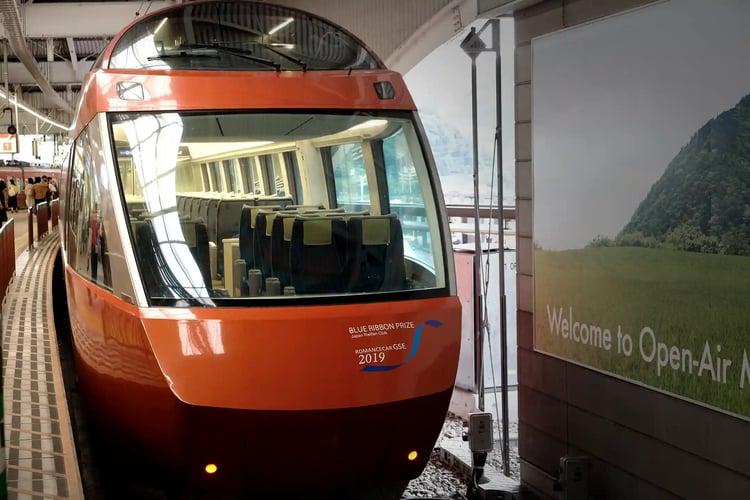
Cultural Heritage That Elevates Well‑Being
Hakone restores you not only through nature but also through enduring cultural spirit. At the forefront is Hakone Shrine. Tradition holds that in 757 (Tenpyō‑Hōji 1), the monk Mangan founded it in response to an oracle from the Hakone deities. Devotion has continued unbroken for over a millennium (*11). The lakeside torii and cedar‑lined approach feel charged with purity; simply walking there fills you with uplifting energy. At the temizuya water pavilion, you perform a cleansing rite with Ryūjin water.
The sacred water at Kuzuryū Shrine is said to “wash away misfortune and attract the good”; taking a sip can leave you feeling rinsed clean in body and mind (*12). While such rites aren’t scientifically proven, as with Zen breathing practices they calm the mind and create space for reflection.
Engaging with traditional crafts—like Hakone yosegi‑zaiku (marquetry)—also supports well‑being. Try making a coaster at a local workshop: as you assemble wood pieces, stray thoughts fade; finishing your piece brings a satisfying sense of accomplishment. Some luxury inns weave cultural experiences into your stay. At Fujiya Hotel’s spa “Zen,” temple‑inspired aesthetics and traditional crafts create a sanctum for soothing the spirit in the Japanese way (*13). Time spent amid cultural heritage becomes nourishment for the heart—another path Hakone offers to elevate mental well‑being.
Award‑Winning Sustainable Initiatives
Hakone is increasingly recognized worldwide as a sustainable destination. Public‑private projects advance environmental stewardship and community vitality, creating a regional circular model with international accolades to show for it.
Hakone Town made the Green Destinations Top 100 in both 2022 and 2023, and then won the Business & Marketing Category Grand Award at ITB Berlin 2024 (*14). Destination management through collaboration among government, residents, and businesses is highly regarded. Initiatives that improve accessibility—such as tourist maps for wheelchair users—have even won a Community Prosperity Award (*14).
Local lodgings are breaking ground as well. One hotel introduced the region’s first binary power generation using hot‑spring heat, supplying electricity and hot water throughout the property without fuel (*15). Another ryokan adopted the world’s first hydrogen cooktops to decarbonize its kitchen (*16). Major resort groups are active too: the Seibu Group switched 45 properties—including The Prince Hakone Lake Ashinoko and Hakone Sengokuhara Prince Hotel—to renewable electricity, aiming to bring about 92,000 tons of CO₂ effectively to zero annually (*17). For travelers who prioritize sustainability, visiting Hakone itself can contribute to environmental and community goals.
Signature Wellness Experiences to Maximize Hakone’s Value
What truly elevates your stay in Hakone is a set of signature experiences that integrate multiple wellness elements—hot springs, saunas, and forest‑based therapies. Below are special programs you’ll want to incorporate: from optimal hot‑spring bathing plans to Zen‑inspired spa treatments and private saunas that reset mind and body.
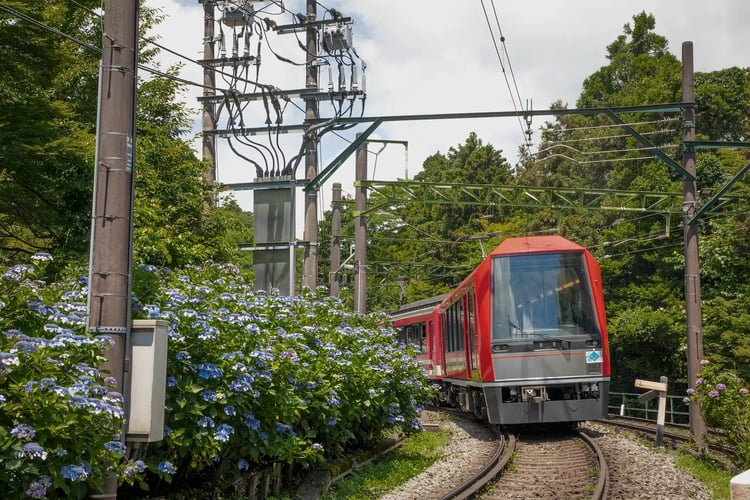
A Blueprint for Thermal Therapy: Ideal Temperatures, Timing, and Breathing
To make the most of 48 hours in Hakone, plan your thermal‑therapy sessions. On your first night, soak for about 15 minutes in slightly warm water around 38–40 °C. This range encourages parasympathetic dominance and deep relaxation (*3), preparing you for better sleep. While soaking, practice deep breathing—inhale through the nose for 4 seconds, exhale through the mouth for 8—to help regulate the autonomic nervous system (*18).
This 4‑8 breathing strengthens respiratory muscles when practiced in the bath and nudges body and mind into a more relaxed state (*18). After bathing, pat dry without cooling off too much and linger in the afterglow. The next morning, follow a blueprint for alertness using contrast bathing.
Start with a 3‑minute dip in hotter water around 42 °C, then rest 3 minutes to cool down; repeat this three times. Such a contrast bathing program promotes autonomic switching and markedly improves blood flow (*4).
Finish with a gentle 5‑minute meditation soak in warm water, heating the whole body before you step out. Lightly bathe the forehead and nape as well; this further favors parasympathetic activity and deepens relaxation. Rehydrate and add light stretching to savor your bodily sensations.
Keep this checklist in mind: “Water at 38–40 °C,” “15‑minute soak,” “deep diaphragmatic breathing,” “three sets of contrast bathing,” and “hydration before and after.” With these, you’ll get the most from Hakone’s hot‑spring therapy and amplify your recovery.
Fujiya Hotel “Zen = ZEN =”—An Authentic Hotel Spa Immersed in Japanese Aesthetics
Fujiya Hotel’s spa “Zen = ZEN =” is an in‑house relaxation facility for staying guests, adjoining the hot‑spring floor on the sixth level of the Forest Wing (*19). The signature treatment is a facial using the spa’s original “Zen = ZEN =” cosmetics—Japanese botanicals like rugosa rose, cherry blossom, yuzu, tea leaves, and rice ceramide, combined with 24‑karat gold and platinum—to tone and care for signs of aging.
The space is unified in a temple‑evoking, “purely Japanese” aesthetic; traditional crafts and contemplative stillness set the tone. Blending Hakone’s nature and Japanese sensibilities, the Aroma Zen Spa is more than indulgence—it gently unknots the “muscles of the heart.” Menus are wide‑ranging by purpose: the “Fujiya Hotel Original Course (Facial & Body)” featuring rose essential oil; a facial using “MDNA SKIN,” co‑developed with Madonna; and “Wakanpōbi (Estherapy Body),” which combines Eastern and Western techniques—all ready for you to choose and unwind.
The hotel’s grand baths draw from Miyanoshita Onsen—a highlight in itself. With four private sources on site, all 120 guest rooms can enjoy Miyanoshita’s waters. There’s also what’s said to be Japan’s first indoor natural hot‑spring pool within a hotel, making it easy to realign your body through in‑house activities.
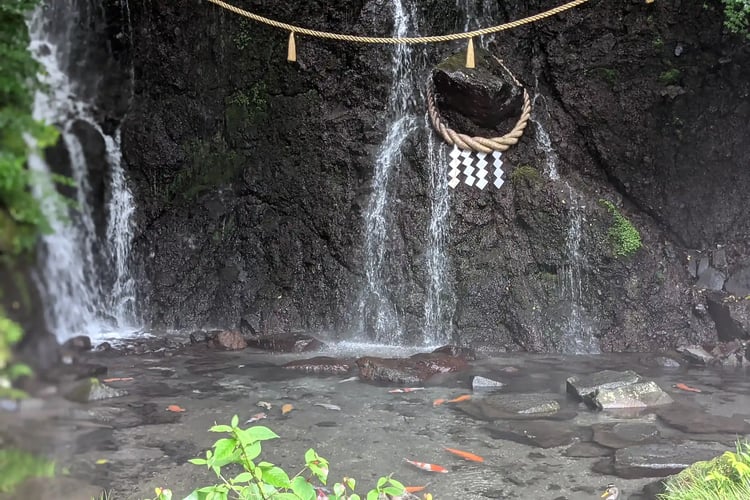
Reset Retreat: Private Sauna and Cold Plunge to Reach a Restorative State
The now‑familiar sensation of being “revitalized by the sauna” becomes truly elevated in Hakone, where some villas and hideaway hotels offer private saunas and cold‑plunge baths right in your room. With no interruptions, you can savor a sauna retreat at your own pace.
A classic approach is three unhurried cycles of sauna → cold plunge → outdoor cool‑down. In the sauna, sweat for 8–10 minutes around 90 °C; once you’re thoroughly warm, plunge quickly (20 °C or below for 20–30 seconds). Start by immersing hands and feet—the farthest points from the heart.
Cold exposure briefly activates the sympathetic nervous system; then, during the outdoor cool‑down (gaikiyoku), parasympathetic activity often surges and heart‑rate variability (HRV) rebalances (*7). In private settings, you can lie down quietly on a daybed and even meditate. Some lodgings lend heart‑rate or activity trackers on request; informal before‑and‑after measurements frequently show longer deep‑sleep periods and more refreshed mornings.
A private sauna and cold‑plunge retreat offers physiological benefits with scientific rationale—and a sense of mental release you can’t trade for anything else. It’s a uniquely Hakone luxury.
Eco‑Luxury Stays: An Investment in Regenerative Comfort
Eco‑luxury—high‑quality comfort delivered with environmental care—is another value Hakone offers. Think hideaway villas embraced by forest; biophilic guest‑room design using local natural materials; and hotels certified for sustainable operations. In Hakone you’ll find stays that let you experience regenerative comfort—accommodations that feel like an investment in the future, balancing travel satisfaction with social meaning. Below are villas for a full digital detox and properties practicing circular hospitality.
Digital Detox in Villas Embraced by Forest
In Hakone’s mountains, private villa‑style lodgings sit ringed by lush woods. Terraces dappled with sunlight and rooms that frame panoramic greenery become sanctuaries in their own right.
Many villas intentionally forgo televisions and instead stock shelves with poetry and art books, inviting you to step away from screens. Interiors are unified with abundant natural wood—floor, walls, ceiling—so you’re wrapped in warmth.
Wood‑rich spaces help people relax; experiments suggest that sleep deepens and daytime concentration improves in wooden interiors (*20). The phytoncide aroma from live wood is also said to stabilize the autonomic nervous system and reduce stress hormones.
Design elements like high ceilings and wide openings strengthen your bond with nature—biophilic design that brings forest calm indoors. At one Hakone villa, every room includes plants and a small waterfall so you can feel greenery and the sound of water at all times.
If you like, you can even leave your phone at the front desk during check‑in. At night, dim the lights and stretch on a yoga mat by candlelight. Fall asleep under a sky full of stars, and your morning wake‑up will feel exceptional. In Hakone’s villas, natural materials and woodland quiet rest your modern brain and heighten all five senses—the best kind of digital detox.
Practicing Circular Hospitality
Hakone also features lodgings that champion circular hospitality: luxurious yet gentle on the planet, with rigorous circular use of energy and resources.
On the energy front, some properties procure 100% renewable electricity. As noted earlier, The Prince Hakone Lake Ashinoko and Hakone Sengokuhara Prince (among others) have switched to renewable power, bringing tens of thousands of tons of CO₂ effectively to zero each year (*17).
Others tap hot‑spring or geothermal heat for space heating and hot water, reducing reliance on fossil‑fuel boilers. One ryokan has introduced a binary turbine powered by hot‑spring steam to generate its own electricity.
Food‑waste reduction and reuse are advanced as well. Buffet breakfasts adjust portion sizes to minimize leftovers, and residual organic waste is composted on site via biomass equipment and returned to the herb garden or local farms (*21).
Much of this circular system is invisible, so properties make an effort to share it. Some offer behind‑the‑scenes tours of energy centers and recycling facilities for interested guests, turning your stay into a learning opportunity about sustainability.
In Hakone’s circular‑hospitality properties, you can savor luxury while contributing to conservation—comfort that comes with a forward‑looking sense of fulfillment.
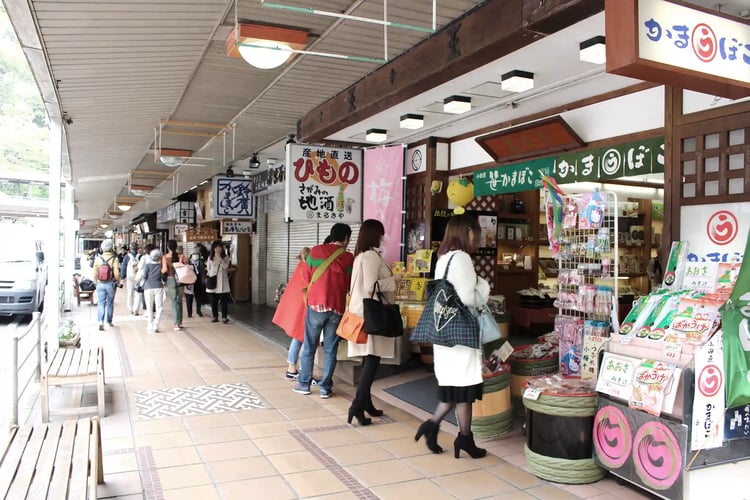
From Farm to Heart: Hakone’s Wellness Gastronomy
Dining is a core joy of travel, and in Hakone it has evolved with wellness in mind. Kaiseki that highlights local organic vegetables and functional ingredients; superfood dishes pairing fermentation with sprouted grains; and pairings with biodynamic wines or sake brewed with Hakone’s spring water—together, these experiences nourish you from within. Here you’ll explore well‑being through food the Hakone way: ingredients and benefits that express “Hakone terroir,” mindful eating, and sustainable ways to enjoy alcohol.
Savor the “Hakone Terroir” and Align Yourself from Within
Ingredients grown in Hakone’s environs brim with functional benefits. A standout is Hakone Nishiroku vegetables. On the western slopes of the outer caldera, long sunlight hours and well‑drained volcanic ash soil yield nutrient‑dense produce. Fresh‑picked leafy greens and roots are rich in vitamins and enzymes; even a simple salad tastes powerfully life‑giving.
Don’t miss Ashigara beef either. Raised in the Ashigara region, this cross between Wagyu and dairy breeds drinks spring water from the Tanzawa Mountains and grows in low‑stress conditions, producing remarkably tender meat (*22). Hakone’s restaurants might serve Ashigara beef as a medicinal‑cuisine hot pot or roast beef, accented with local botanicals like sanshō pepper or yuzu to aid digestion.
A meal steeped in “Hakone terroir” doesn’t just fill you up—you’ll feel energy welling from within afterward. Say goodbye to the sluggishness of overindulgence; in Hakone, wellness gastronomy helps you realign from the inside out.
Mindful Eating with All Five Senses—Practiced Through Kaiseki at a Ryokan
At many ryokan in Hakone, you enjoy kaiseki slowly in your room, a private dining room, or a dedicated space—settings ideal for “mindful eating,” where every bite engages all five senses (*23). Rooted in washoku philosophy, kaiseki expresses local seasonality through dishware and presentation, honoring nature and the passage of time. Here are five practical tips for savoring a kaiseki course at a ryokan:
%20in%20Hakone.webp?width=750&height=500&name=Hayakawa%20River%20and%20a%20ryokan%20(hot%20spring%20inn)%20in%20Hakone.webp)
Pause for one breath. Sit tall, settle your breath, and say itadakimasu to voice your gratitude. Slowing your inner tempo flips the switch for attentive dining.
See the season. Before the first bite, take in the colors, arrangement, and textures of the plates. Recall the washoku principle of “five tastes, five colors, five methods” to sense the intent behind the menu.
Attend to aroma, temperature, and sound. Notice the waft when you lift a bowl’s lid, the warmth of the steam, and even the soft crisp when a batter gives way. This sensory attention is the core of “eating meditation.”
Smaller bites, slower pace, more chewing. Reducing bite size and increasing chews heighten satiety and help prevent overeating. Observational research links slower eating and more chewing with lower energy intake and reduced obesity risk.
Let go of multitasking while you eat. Step away from TV and phones. Distracted eating tends to increase intake; focus on the plate before you.
Served course by course at ideal temperatures, kaiseki pairs a quiet environment with unhurried practice—effectively “eating meditation.” You’ll feel satisfied in body and mind and be less likely to overeat. When you stop second‑screening and savor each bite with gratitude and joy, your memories of the journey become deeper and more vivid.
Sustainable Pairings: Biodynamic Wine and Spring‑Water Sake
To crown your wellness gastronomy, consider drinks that harmonize with the environment. Some luxury lodgings in Hakone curate lists heavy on wines from biodynamic vineyards. Biodynamic viticulture builds on organic farming by integrating celestial rhythms and biodiversity, drawing out the inherent vitality of the soil so grapes express terroir more vividly. Because no synthetic pesticides or fertilizers are used, grapes often retain abundant antioxidants and polyphenols, and ferment cleanly with healthy yeasts. The resulting wines are pure‑tasting yet layered. One French analysis even found biodynamic‑certified wines averaged 11.8% higher ratings than conventional counterparts (*24).
In Hakone, sommeliers often craft pairings around seasonal dishes: an organic white with mountain‑vegetable tempura; a full‑bodied biodynamic red with Ashigara beef steak—food that resonates in the body paired with natural wines. If you love sake, don’t miss local labels brewed with mineral‑rich spring water from the Tanzawa range. At Inoue Shuzō, a long‑established brewery in the Hakone area, water is drawn from an in‑house well—hard water that originates on the eastern foothills of Mount Fuji and flows through Hakone’s mountains—then used as the mashing water. Brewers speak of three harmonies: the cool down‑slope winds from Hakone, the Tanzawa spring water, and carefully chosen rice (*25). Their “Hakoneyama” sake is dry, clean, and full‑flavored—excellent with food.
Enjoying a glass while hearing the brewery’s story heightens the travel mood. When you choose biodynamic wine or local sake, you’re not just tasting; you’re connecting with producer philosophies and nature’s relationships—pairings that enrich the heart. Choosing mindful drinks supports your health and the future of the places behind them.
On a Hakone night, savoring sustainable drinks alongside fine cuisine feels like wellness gastronomy that travels from farm to heart.
How to Sustain Well‑Being After Your Stay
When you carry Hakone’s mind‑body harmony back into daily life, your journey’s value multiplies. Here you’ll find ways to sustain and deepen well‑being beyond your stay—Hakone‑style breathing, a 5‑minute Zen‑yoga routine, and participation in international wellness‑travel networks. Bring home key insights and habits from your trip and anchor them through micro‑steps for 42 days (a common benchmark for habit formation). Your lifestyle will grow more healthful and sustainable—by your own design.
A 5‑Minute Yoga Routine
Even on busy days, you can fold in a 5‑minute morning yoga flow inspired by Hakone’s forests. Recall the freshness of those deep breaths and reset yourself at dawn.
The steps are simple. Open a window for fresh air, stand quietly with eyes closed, and take three deep breaths. Next, raise your arms overhead as you inhale and lower them as you exhale—the Half‑Moon Pose—for five rounds to each side, coordinating spinal lengthening with breath to wake your body.
Sit on the floor, cross your legs, lengthen your spine, and hold a basic zazen posture for one minute. Visualize the stillness you felt at Hakone Shrine or the calm surface of Lake Ashi.
If you have one, softly ring a singing bowl or tingsha and listen to the fading resonance—its clear tone draws your awareness back to the here and now.
Finish by lying down and gently twisting both knees left and right to release your back; rise slowly to close. Practiced daily, even this five‑minute routine steadies the autonomic nervous system and helps you start the day more resilient to stress. By adopting Hakone’s deep breathing and balanced state as a short daily ritual, you’ll sustain the wellness gains of your trip.
One tip: set your phone alarm to a gentle bell and begin yoga right when it chimes. Pleasing sensory cues tend to stick. Let morning light and birdsong join your 5‑minute routine to recreate Hakone’s mornings at home—your day will likely begin in calm.
Joining International Wellness Travel Networks
If Hakone opened your eyes to the appeal of wellness travel, consider looking outward to global communities of kindred spirits. Joining an international network of travel‑loving, health‑minded people helps you exchange useful information and stay motivated.
A leading example is the Wellness Tourism Association (WTA), a North American nonprofit founded in 2018 (*26). Its members range from industry professionals to travelers who care about wellness tourism. WTA conducts research across dozens of countries and publishes insights on wellness‑travel trends. Membership comes with newsletters and event access. Webinar topics have included “Mindfulness Practices You Can Use While Traveling” and “Traditional Therapies and Tourism Around the World,” enriching your well‑being‑travel knowledge.
Another option is the UK‑born Climate Friendly Travel Club, a social enterprise aiming to become “the world’s first truly climate‑friendly travel club” (*27). By joining international networks, you keep the spark of wellness and sustainability you found in Hakone alive—and growing. Sharing with a global community becomes steady encouragement.
Even after returning to everyday life, report on your trip and trade plans for the next one online. Let these communities help you deepen your own wellness‑travel life. Your time in Hakone isn’t an ending—it’s the start of a global journey in well‑being.
Conclusion
Hakone is more than a sightseeing spot—it’s a sanctuary of renewal where you can remake yourself. Volcanic hot springs and rich nature soothe you; longstanding culture refines your spirit; and cutting‑edge sustainable hospitality points you toward a hopeful future. When you step away from the city’s clamor and head to Hakone, you place yourself in another world within about 90 minutes of Tokyo, awake to experiences that enliven all five senses.
The well‑being you cultivate doesn’t end when the trip does. The breathing you refined in Hakone, the self‑care you learned, and the sensitivity to harmony between people and nature—these will enrich your life long after you return home. A high‑value journey isn’t mere indulgence; it’s an investment in yourself and the environment.
So, is Hakone worth visiting? Absolutely—especially for travelers seeking sustainable luxury and evidence‑backed wellness close to Tokyo. Even back in your routine, as long as Hakone’s memory lives in you, balance and contentment endure. This is the true value of visiting Hakone: not a fleeting respite, but the power to shape a better future self. As a paradise of sustainable, luxury wellness, Hakone continues—day after day—to share its gifts generously with everyone who comes.
Author Bio



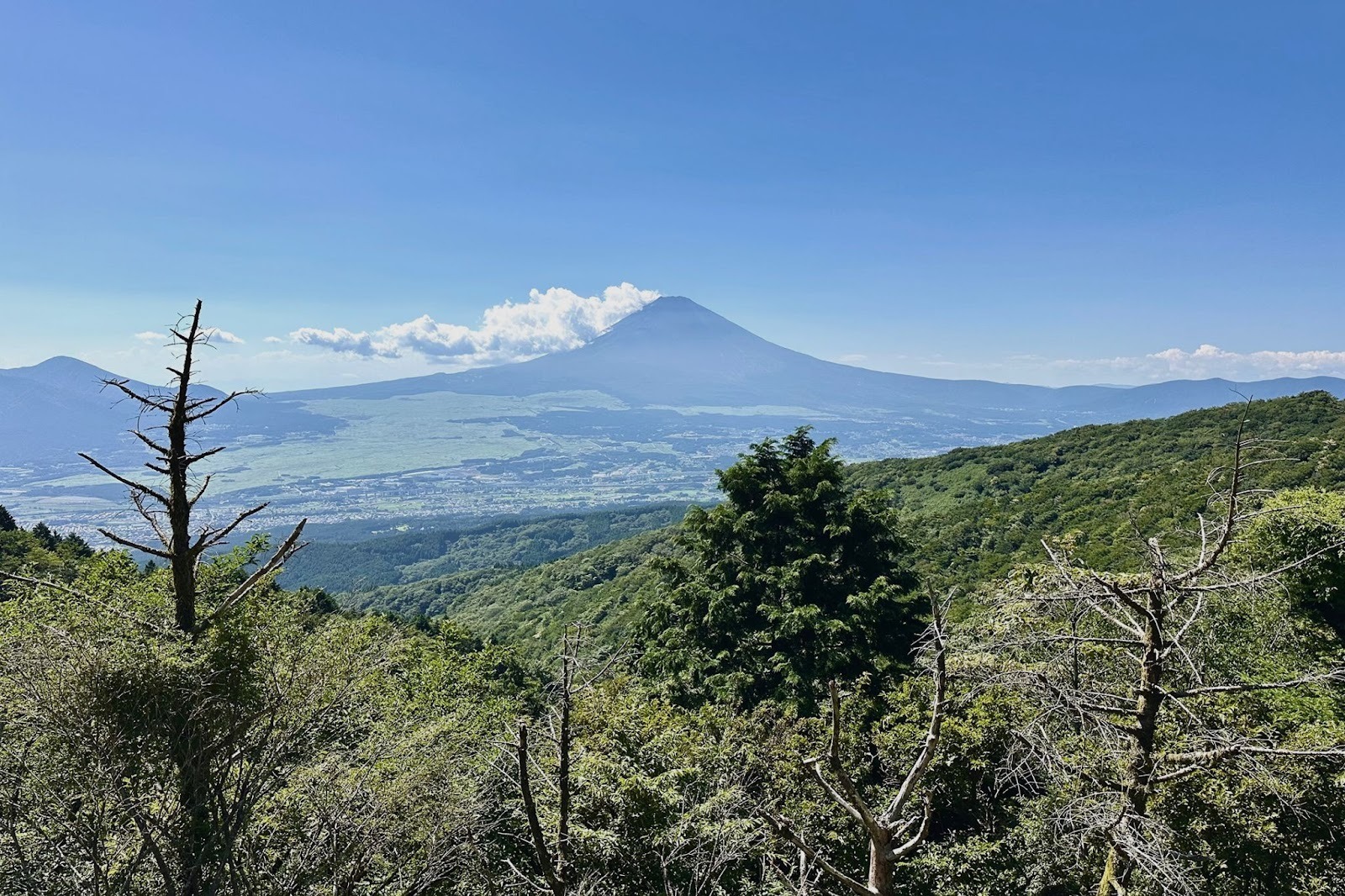
.webp)

